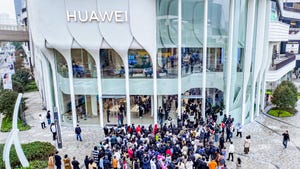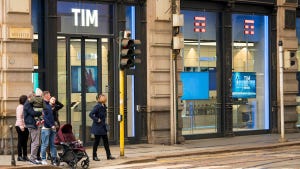Vubiquity, Technicolor Pioneer HDR Conversion
A new service using technology from Technicolor will enable anyone to up-convert video to HDR, with the aim of making more HDR content more widely available.

Vubiquity is installing technology from Technicolor that will up-convert almost any existing video to high dynamic range (HDR). The collaboration of Vubiquity and Technicolor is meant to grease the skids for more video providers to start delivering HDR content.
Currently, the only widely available HDR content is being streamed. Amazon.com Inc. (Nasdaq: AMZN) began streaming HDR content last summer, Sony Corp. (NYSE: SNE)'s new Ultra service has some movies available in HDR, and Netflix Inc. (Nasdaq: NFLX) just confirmed it has begun streaming HDR in the last few days. (See 4K & VR Trickle Out... Slowly)
Vubiquity Inc. 's service will enable any network to offer consumers both live linear programming and video-on-demand (VoD) in HDR. With the ability to up-convert nearly any content, the amount of HDR content should expand significantly.
The company expects its service to become commercially available sometime at the end of the year.
Technicolor (Euronext Paris: TCH; NYSE: TCH) and other companies are beginning to refer to any video without HDR as standard dynamic range (SDR).
In a webinar hosted by Light Reading on Tuesday (April 12), Josh Limor, senior director, ecosystem and technology development at Technicolor, and Frédéric Guillanneuf, head of HDR business development at Royal Philips Electronics N.V. (NYSE: PHG; Amsterdam: PHI) , explained that the approach is to package SDR content with metadata that end displays will use to perform the conversion to HDR.
Want to learn more about ultra high definition video, high dynamic range, and how service providers can deliver HDR content? Review our recent webinar "The Evolution of Ultra High Definition," sponsored by Technicolor. Find it on our webinar archive page.
The amount of metadata required is considered negligible in the context of the entire video stream. Netflix, for example, is continuing to recommend consumers have a broadband connection of at least 5 Mbit/s for a single stream of HD (SDR or HDR), and a minimum of 25 Mbit/s for UHD (SDR or HDR).
Limor said Technicolor is helping Amazon create more UHD HDR content. He said Fox Films is increasingly filming in HDR, and other studios are beginning to do so as well.
The expectation, he continued, is that HDR will first be seen in feature films, closely followed by sports and special events. Sports is usually where new video options get their greatest impetus, and that's likely to be the case with HDR as well. Premium network and broadcast content in HDR should follow, and after that basic channels will begin to adopt HDR.
The process is going to be slow at the start, but vendors are already selling HDR TVs. The pump needs to be primed. The process of up-conversion is the best way to get more HDR content out and available, Limor argued. One reason is that legacy content can be up-converted. Another is that filming in HDR requires new cameras, and many video producers just bought UHD cameras. Many companies -- especially broadcasters -- are going to have a hard time justifying the expense of new UHD/HDR cameras right on top of those purchases.
Netflix just confirmed it has started delivering Ultra HD (UHD) video with high dynamic range (HDR). The company said it is also distributing HD HDR.
Netflix is supporting two versions of HDR: HDR10 and Dolby Vision. "Marco Polo" and "Daredevil" will be the first shows available in HDR, according to reports from Flat Panels HD and Engadget.
Netflix requires customers to have a four-stream plan to get HDR. Netflix's current list of companies supplying TVs that support both Netflix and HDR includes LG, Samsung, Sharp and Sony.
— Brian Santo, Senior Editor, Components, T&M, Light Reading
Read more about:
EuropeAbout the Author(s)
You May Also Like












